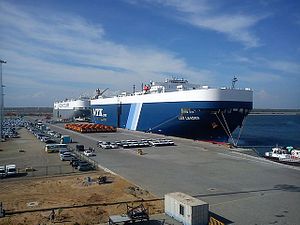As the Trump administration closes in on its 100th day, in the area of military security guarantees, some have argued that its policies represent a continuation of those of traditional Republican administrations. Compared to the Obama administration, however, there are some real differences. In particular, two major changes have been made regarding East Asia, scene of remarkable shifts in the international order, most notably the rise of China.
First, while the Obama administration advocated a policy of rebalancing that placed importance on a multinational framework of regional cooperation centered on the Trans-Pacific Partnership and ASEAN, the Trump administration has recoiled from this, for instance by pulling out from the TPP. It is likely that the frameworks advocated by the Obama administration were functioning effectively to restrain the regional superpower that is China.
Second, while the Obama administration placed importance on horizontal cooperation with allies and related countries when it came to military and security guarantee matters, and also favored the building of networks, Trump has shown little interest in multilateral security frameworks. Although the Trump administration favors bilateral security frameworks, such as America’s alliances with Japan and South Korea, it has yet to take any action on multilateral frameworks.
Meanwhile, not only is China trying to take the lead with free trade agreements such as RCEP and FTAAP, on the security guarantee side it is advancing into the Indian Ocean with the construction of sea ports in Brunei and Sri Lanka, the building of a “friendship bridge” in the Maldives, and the construction of pipelines from Myanmar and Pakistan. Although this is all happening under the name of the One Belt, One Road economic strategy, in fact the policies are closely tied to military and security guarantee issues. The construction of the ports and other activities serve to secure routes for the People’s Liberation Army Navy to places as far away as Djibouti, while also diversifying crude oil transport routes from Africa.
For China, which is now squaring off against the United States in the South China Sea, the Indian Ocean is a region of high strategic importance; and if the Trump administration has a negative stance towards multilateral cooperation and security structures, the Indian Ocean could become a blank space for the United States. There is also the fact that while the Pacific and Atlantic Oceans directly adjoin the United States, the Indian Ocean does not.
Of course, defense in the Middle East is important, but U.S. engagement in the Indian Ocean needs to be watched. It is, after all, an important sea lane for Japan and other nations in Northeast Asia, so even if the Trump administration shuns the India-Pacific – the geographical space that spans from the Indian Ocean to the Pacific Ocean – East Asia is hardly likely to follow suit, particularly given the existing frameworks of multilateral economic and security cooperation that include India and other South Asian nations.
As the countries of the region maintain this spatial awareness, the foundations for stability and peace will be to continue and strengthen multilateral economic and security frameworks that go beyond bilateral relationships.
Shin Kawashima is a professor at the University of Tokyo.

































